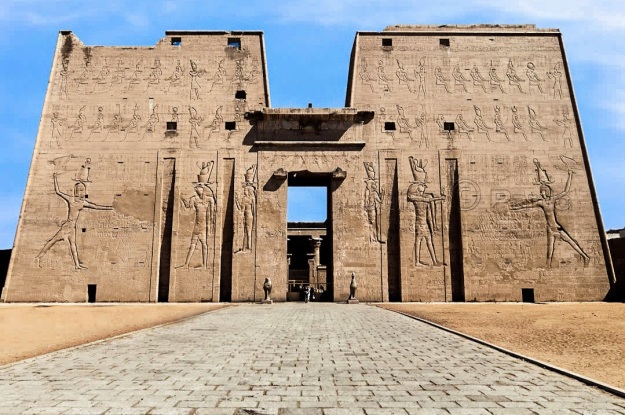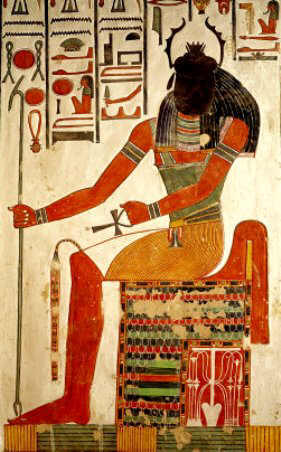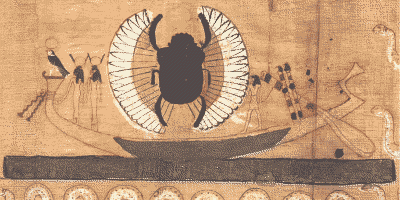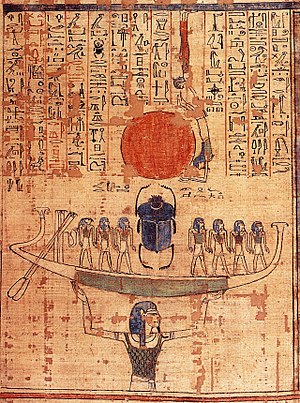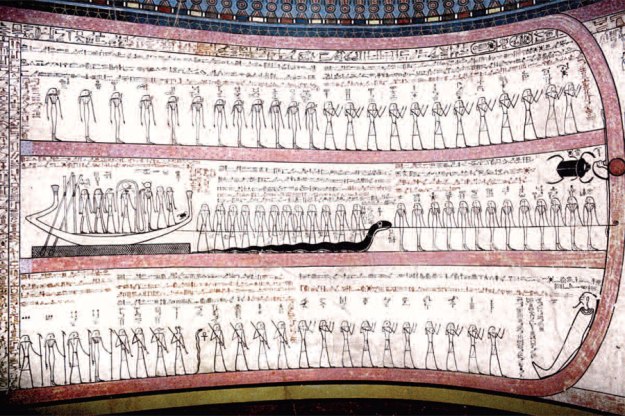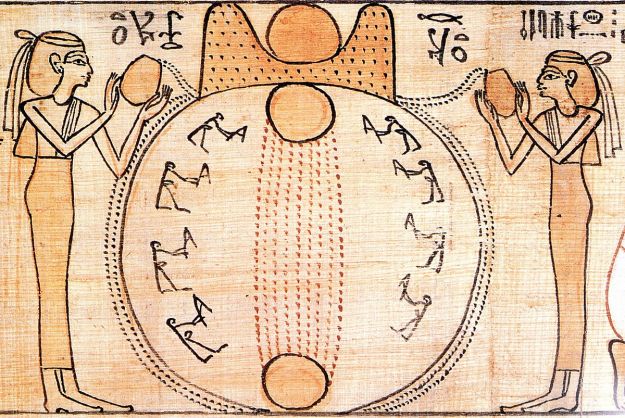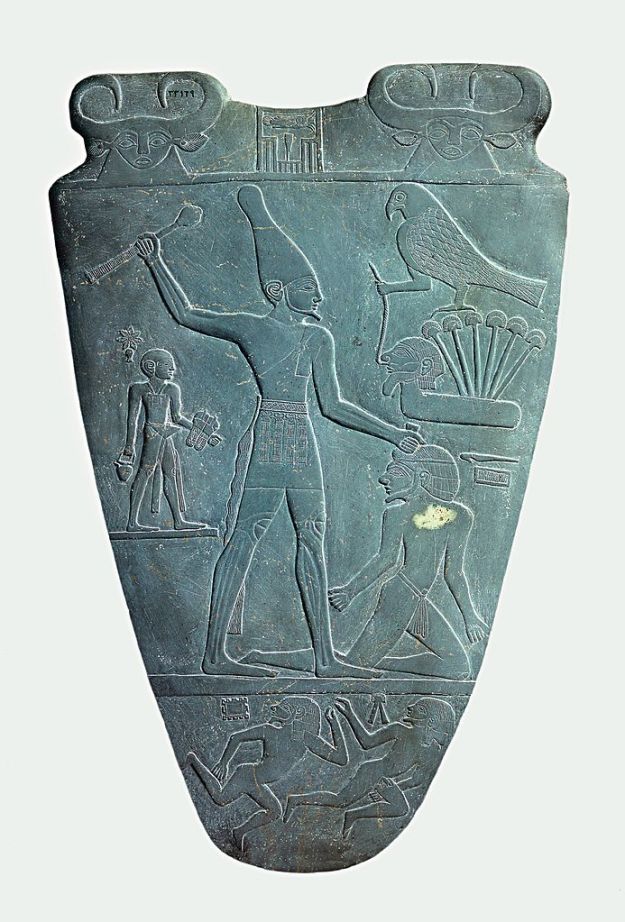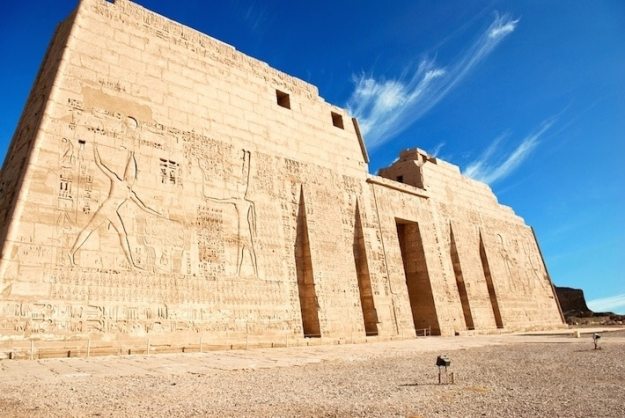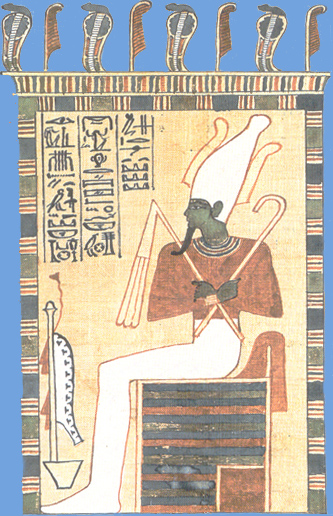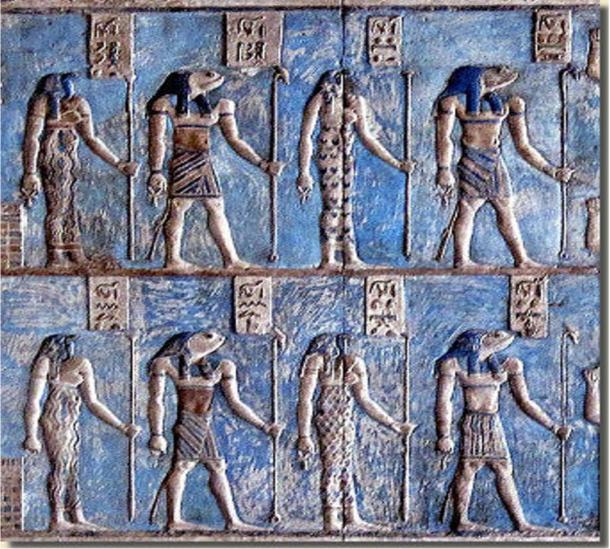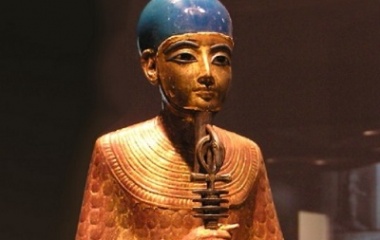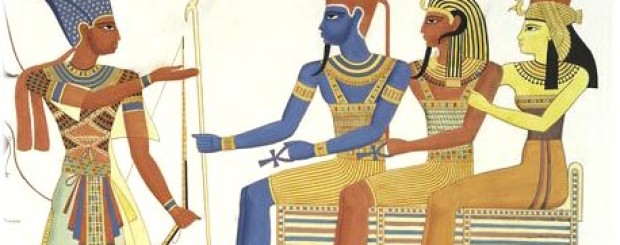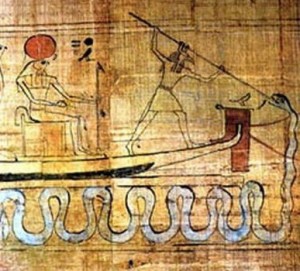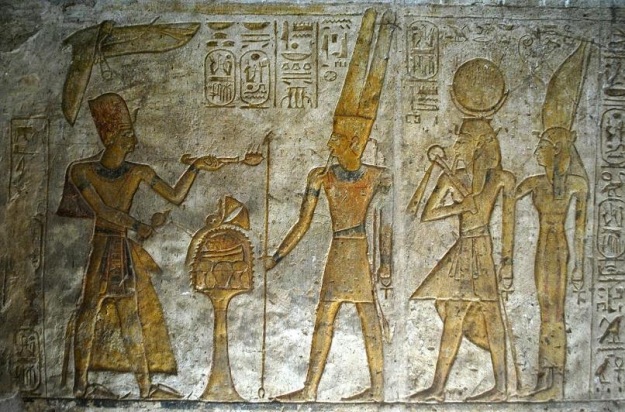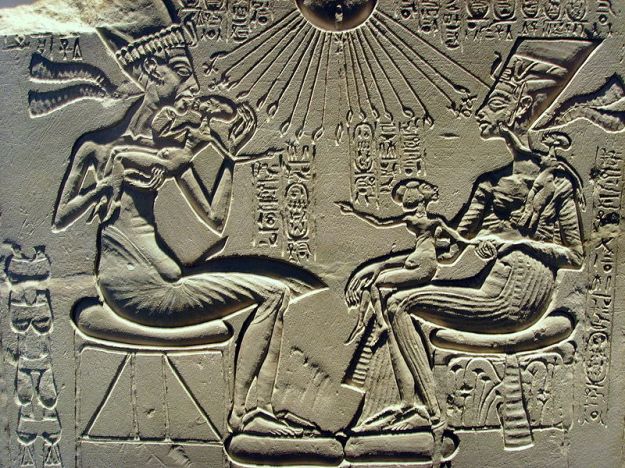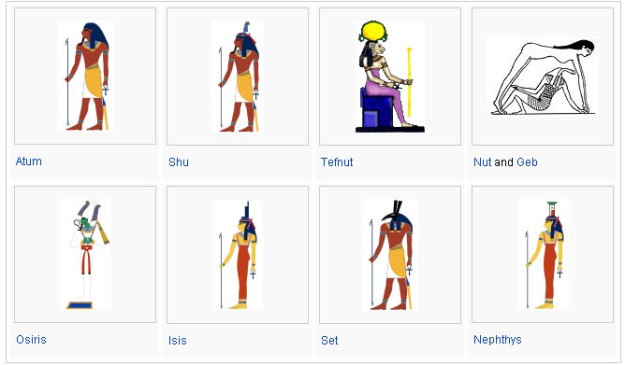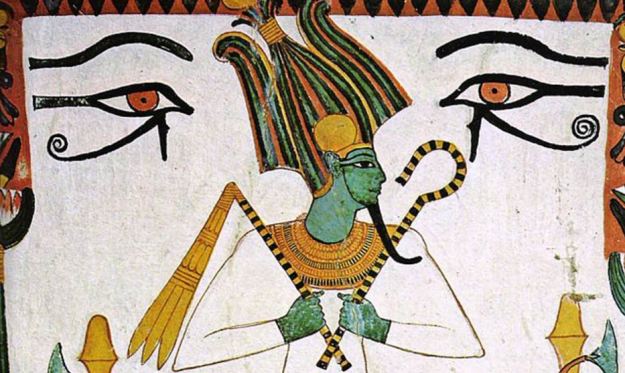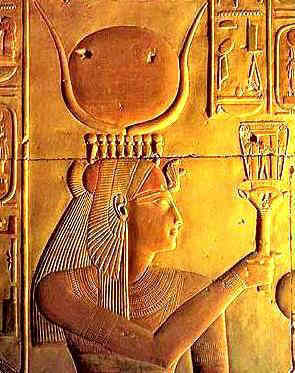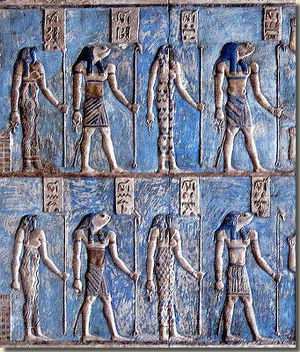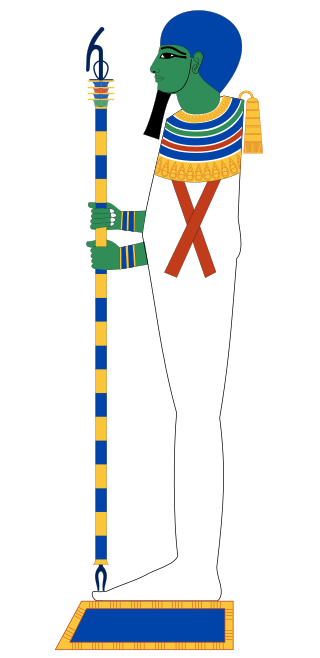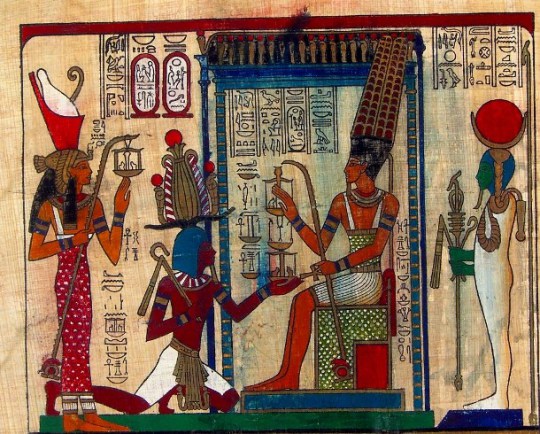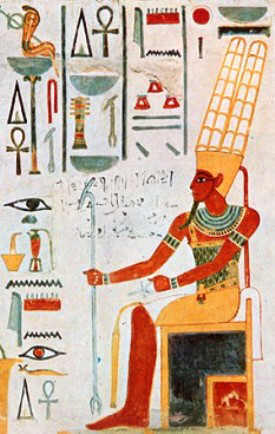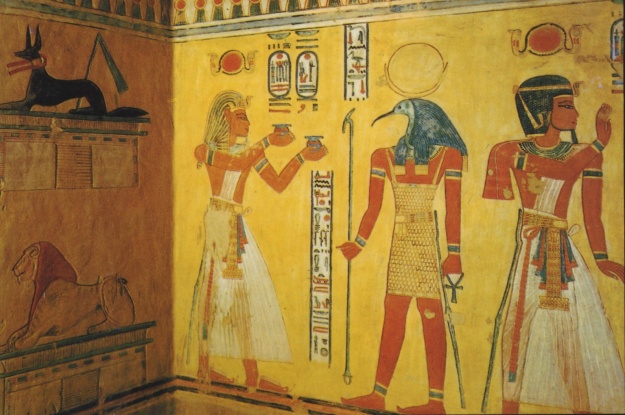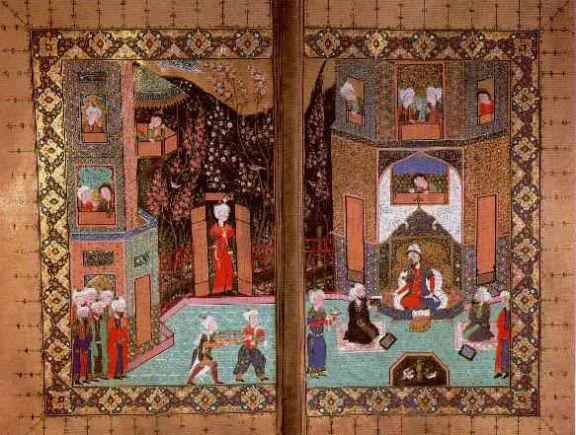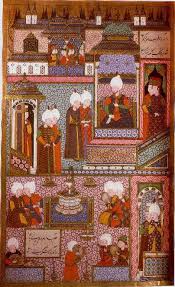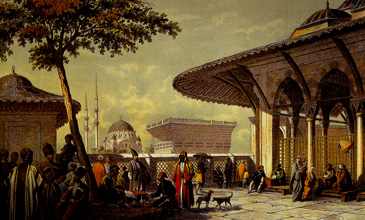From my correspondence with an African American willing to undertake studies in Egyptology in order to contribute to the his community’s need of cultural and spiritual betterment.
Edfu Temple of Horus
============= FIRST LETTER ============
Пятница, 3 ноября 2017, 20:43 +02:00 от K P <xxxx@xxx.edu>:
Dr. Megalommatis,
As an African American, I would like to focus on the culture of Ancient Kemet. I want to use aspects of Ancient Kemet culture in a modern sense to uplift the self-esteem and perspectives of my community. I believe history repeats itself and we can learn from it to modify the present to shape the future for the better. African American community in the USA is in dire need of an economic, cultural, spiritual, and worldview revolution that is African centered. I know I must learn the mdu ntr to be able to interpret the culture more accurately as well. Thank you again, Dr. Megalommatis.
Best,
K P
(titles)
============ FIRST RESPONSE =============
Dear Sir
Thank you for your interest and letter!
You are right in using the real name of Ancient Egypt (Kemet), and even more so in searching in one of the world’s two oldest civilizations (the other being Sumer, Akkad, Assyria & Babylonia in Mesopotamia) the spiritual – moral – cultural – societal elements that could save today’s fallen world from final annihilation.
I have always been convinced that what one does matters not; what truly matters is the totality of the conditions and the circumstances under which one does what he does.
Your statement about history repeating itself and about the necessity to learn from it – and for the purpose that you state – can be co-signed by practically speaking everyone – even those who would wish to kill you!
Why do then so opposite elements agree on this?
1. Real History and Fake History made of Personal Concepts, Principles, Ideas, Theories, Thoughts, Feelings and Desires onto History
Because when trying to learn from History, most of the people, who try to do so, do not really do so, because they project onto History their prefab concepts, principles, ideas, theories, thoughts, feelings and desires. Then, they don’t learn History itself, but the version of History that pleases them and which drives them of course to failure – the failure that you see around you in the US and worldwide.
To truly learn History, one must be ready to drastically and resolutely reject what he likes, what he knows, what he loves, what he believes, and what he desires.
The first and worst obstacle in the path of one person willing to truly learn the real History (and not the silly version that pleases him and thus destroys him) is today’s overwhelming materialism.
Do not think that this evil, villainous and criminal materialism is limited only among self-declared materialists, atheists, communists and consumerists! It is omnipresent and prevalent also among all the people who say they are religious, whatever their religion may be.
Of course, as you already know, there has never been one single religion in the world that tolerated / accepted materialism of any form. How now have the followers of all religions become distorted and compact materialists?
That’s simple: over the span of the last 500 years, all the religions (with the exception of those of few – lucky – remote societies that remained untouched from technology and political developments, like some Oromos of Eastern Africa and few others) underwent the final stage of their corruption and they progressively became totally fake, dead systems that their founders and their earlier believers, before 500 or 1000 or 2000 years, would vehemently reject, if they came back to life today.
Yes, it is very correct; nothing can be expected from all the so-called religions of today, except their official Act of Death Certificate.
What will this Act of Death Certificate be like?
2. Today’s Fake, Materialistic Religions & Spiritual Omnipotence
This will be precisely an evident demonstration of Spirituality, which has always been the focal part of all religions, and …. of which today’s fake religions are totally, irrevocably, and lamentably deprived.
Yes, medu netsher (both, the writing and the sound of the Ancient Egyptian language) will greatly help you access original sources. You must then study them carefully and systematically.
But ……….
There is no guarantee that you will understand their real meaning, if you – like most of the Egyptologists of the last two centuries – project onto them your belief, your Weltanschauung, your background, and your thoughts, feelings and desires. You, in parallel with your studies, must clean yourself from all this stuff.
Contrarily to opposite theories and pathetic assumptions, there was none else but the Ancient Egyptians who before more than 4500 years built the great pyramid. It was a definitely easy task.
How?
They did not carry the burden of thoughts, emotions and desires that makes all of us collapse now and be heavier and therefore weaker and unfit for that simple task. Edward Leedskalnin proved this already with his great work; why don’t you visit his masterpiece which is open to the public, since you live in the US?
Only compact, villainous and Satanic materialism distorts the minds of the people and makes them unable to realize that the Man that God (or Gods – there is no difference; it’s the same!) created was not the fallen trash of today, but greatly capacitated in ways so miraculous that no one today would believe. That’s why it was easy for the Ancient Egyptians before 4500 years – despite the(ir) original fall / sin and expulsion from the Paradise – to perform the tasks needed for the erection of a monument and for many other today incredible tasks.
But I am digressing.
You say that the African American community in the USA is in dire need of a multifaceted revolution ….. that is ‘African centered’.
3. Identity and Integrity
I fully understand your need and your drive for identity and integrity; I respect it.
But do you really believe that the present continents existed before the Flood, which took place after the erection of the great pyramids?
Did the Ancient Egyptians call their land a ‘part of Africa’?
Do you really believe that there were ‘black skin’ and ‘white skin’ and ‘red skin’ and ‘yellow skin’ before the Flood?
We are all the children of the same father.
And are only African Americans those who are today in “dire need” of a multifaceted ‘revolution’ that I should rather call ‘alternation’ and ‘return of the Spirituality’?
All men are indeed in dire spiritual need – worldwide.
And is it the humans or the Spiritual Realm that arranges who leads and who follows this – much needed for all – alternation?
That’s why you must not view your effort as limited only within the circle of your community.
Perhaps your community will have to lead the world.
It is then a universal effort.
This (: the decision about who leads and who follows) is not something that humans can arrange; it is already difficult for us to comprehend the will of the Divine.
I am willing to discuss with you these issues in the depth and the width that you may wish.
……………………………………………
4. Being & Becoming / Being & Non-being
Who knows? We may have met in the distant past, if it truly exists! I say so, because for many (and for the Ancient Egyptians) there is no time at all. Everything is an eternal recapitulation under different forms.
That’s why Being and Becoming were for the venerable Kemet people the two axes of the Existence always in indissoluble unity and in absolute independence.
And out of the wisdom of the Five Elements, they realized that Being and Non-being (or Nothingness) were the two axes of the Creation.
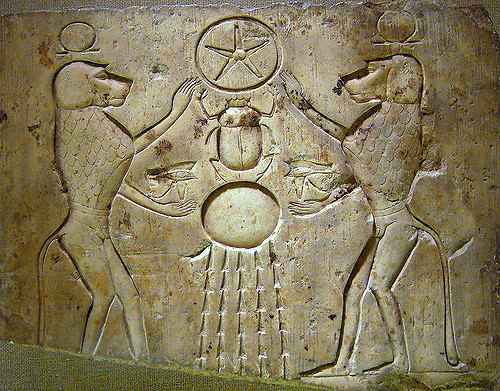
Do you know the Brethren of Purity? 300 years after the Prophet Muhammad they lived in Basrah (South Iraq) and they reinstated the reality that Being is merely an emanation of forms – exactly like the Ancient Egyptians knew 3400-3600 years before the times of those Muslims. Did these Brethren live in Asia, in Africa? Were they Black, White, Red, Yellow?
Where to find the best explanation of the spiritual – material process of the emanation of forms?
Only modern criminal gangsters, impersonating the ‘Egyptologists’, dared malignantly and malefically ‘translate’ the Holy Texts rw nw prt m hrw (The Book of Coming Forth into Light) as ‘book of the dead’.
This happened because most probably those ‘Egyptologists’ were already dead (while they appeared as alive) and wanted the entire mankind to be dead.
That’s why Jesus was right saying ‘Let the dead bury their own dead, but you go and proclaim the kingdom of God’.
5. The Kingdom of Heaven: Personal Transformation into Ethereal Body
Even this sentence of Jesus was translated erroneously, because the ‘Kingdom of Heaven’ as term is conveniently vague and unclear.
In Greek, Βασιλεία των Ουρανών (Vasilia ton Uranon) means ‘the kingdom of the skies’, but in reality it means ‘the Kingdom of Ether’ or ‘the Prevalence of Ether’, i.e. ‘the ability (of one human) to act (or prevail) at the ethereal level’. This involves a higher spiritual proceeding (or exercise, if you want) in which the human manages to achieve the full elimination of the other four elements (Soft Waters, Air, Earth, and Salted Waters) at the very material level of his own body.
This proceeding is tantamount to absolute personal control of one’s own Ether and subsequently to complete transformation of one’s body (which is made of five elements) into a material body made of purely Ether. This is achieved through abstinence, imagination, fasting, prayer, and meditation, i.e. faith!
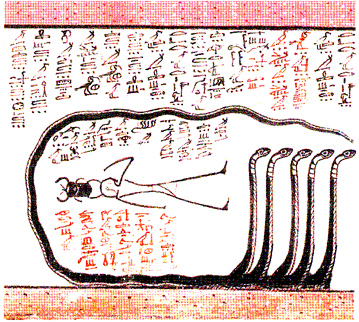
Best,
Shamsaddin
============== SECOND LETTER ==============
Понедельник, 6 ноября 2017, 6:07 +02:00 от K P <xxxx@xxx.edu>:
Dr. Megalommatis,
Thank you, for you in-depth response. You have much knowledge and wisdom. I am willing and open minded person on a journey to seek truth and knowledge. I would be honored to learn from you.
………………………………………………
I believe in paying respect to Nature and the honorable Ancestresses and Ancestors who sacrificed so much for future generations.
………………………………………………
Kemet is my passion and something I have been studying for the last decade on my own. I really want to dedicated my life to study the culture and history of Kemet.
Thank you again for your willingness to even hear me out and take time to respond to me.
Best,
K P
(titles)
============= SECOND RESPONSE ========
Dear Sir,
Thank you for your response ….. !
I have been in the States several times back in the 60s and the 70s (with my parents) and in the 80s. ……………
I know that the first foreign language that Americans have the tendency to learn is Spanish, and this is normal due to the vicinity of the Hispanophone world.
6. Important languages for Egyptological Bibliography
However, when it comes to Orientalism, Egyptology and African Studies, Spanish is of lesser importance, because only recently Spanish specialists delved into the different branches of Humanities that focus on Asia and Africa.
More particularly about Egyptology, the main languages that one must learn in order to have access to the enormous modern bibliography are: French, German, English, Italian and Russian. Even before 1850, there were chairs of Egyptology across today’s Italy (which was not one country at the time), but a Spanish Egyptologist is something that comes with the 2nd half of the 20th c.
You can’t therefore compare Italy to Spain when it comes to Egyptology; the latter is an academic dwarf, and the former a giant. And I don’t even mention the still colonized countries south of the US. Not one of them was allowed to develop Orientalist departments. The worst case of all is the fake country Brazil whereby archaeological excavations have been prohibited by law for the entire coastal zone and for a 50 km distance. You may want to ask why; the answer is simple. Numerous archaeological teams would excavate more Ancient Phoenician, Carthaginian and Egyptian antiquities than those unearthed in today’s Lebanon, Tunisia, Algeria, Libya and Egypt. Hundreds of temples! Thousands of inscriptions! As a matter of fact, History as ‘officially’ taught is a well-orchestrated, total fallacy.
I would say that for Egyptology, the three languages, namely French, German and English, are the minimum.
Some other European countries do indeed offer departments of Egyptology in their universities, so Dutch, Danish, Polish, Czech, Hungarian, Swedish and Finnish can also help. Of all the other countries of the world, only Japan, Israel, Egypt and Sudan have specialized departments of Egyptology, so Japanese, Modern Hebrew and Modern Arabic can be useful too though to lesser extent.
I believe that the first thing you have to do is to find where close to your place you can find a university with a dept. of Egyptology or Ancient Near East.
Would it be possible for you to pursue two curricula at the same time?
…………………………………………………..
From now on, you can also set your own targets and start reading about Ancient Egypt. In this regard, I could come up with suggestions, if you let me know your very specific interests in the matter.
But I have to warn you from now!!!!
7. Hindrances in the Path of Studying the Oriental Past
Reading is one thing and truly learning is a totally different thing.
The world is filled with people who read much during their entire lives and still learned nothing or almost nothing; this is valid indeed for professional Egyptologists who teach in different universities across the Earth.
In this regard, you will surely face (like everybody else) two major obstacles:
First, if you compare today’s scholars to those of the 19th c. – early 20th c. academics, you will realize that there are almost no pioneers anymore. There are few real explorers; most of today’s specialists lose their main topic’s overview because of their over-specialization. They think that ‘academic achievement’ must be sought only in the specific, far-fetched detail that was not noticed before and not in 1) a fresh interpretation of the material record or 2) a new standpoint / look over their topic. Today’s academics became conventional administrators and the disciplines of Humanities look rather like divisions of a ministry whereby no particular initiative is tolerated if coming from the bottom or the outside, and not from the top. In other words, today’s university staffers look like Chinese Mandarins who care only for the preservation of an enormous bureaucracy. Quite unfortunately, wherever bureaucracy starts, Humanities go extinct, civilization collapses, and societies disintegrate.
Second, and even worse, the 19th c. Western European search for Ancient Egypt and the subsequent birth of Egyptology were flawed since Day 1. The same happened to every other Orientalist discipline. Egyptology, as a matter of fact, is an Orientalist branch, like Assyriology, Hittitology, Iranology, Hindology, Sinology, etc. Quite unfortunately, even before sailing to Somalia, India, Egypt and other parts of the Orient (Asia, Africa and Eastern Europe), Western Europeans – academia, explorers, diplomats, agents and adventurers – had a very wrong, preconceived idea (and every preconceived idea is wrong) about the Orient.
8. The Divide ‘Orient vs. Occident’ is a Fake!
What is even worse is that they also viewed the entire world as a divide between the Occident and the Orient (West and East). which is preposterous and cannot be accepted as world understanding among those days’ Western Europeans, because they had not yet traveled, explored and studied the world – so they were expected not to form any idea in advance.
Even worse, those who traveled and explored parts of the Orient proved only to be the victims of their own preconceived ideas and schemes, of their own sources {Ancient Greeks and Romans understood the Orient only too little too late – because when Greece and Rome were formed as civilizations, the Orient (Mesopotamia, Egypt, Anatolia, Canaan) had already and for much time entered into a long phase of decadence}, and of the image of Orient they had shaped when back home. To add perjury to infamy, the early Orientalists projected their vision of the Orient onto the real, non-imaginative Orient that they visited and which – too bad for them and for us – they failed to even see!
The above mentioned grave trouble continued from generation to generation of scholars, and the system was reproduced down to our days. Few were perspicacious enough to spot the terrible problem and describe it to the extent that they realized. Edward Said was one of the these few scholars. I don’t know to what extent you are familiar with this scholar and intellectual, and whether you read his illustrious book ‘Orientalism’. This is a must read. It is an essential tool in understanding how critically you must stand toward modern egyptological publications.
Bear in mind that this inherent Western European effort to see the Orient as degraded (and therefore posterior and lower than the Occident) was later transferred to America – a country that gradually moved away from its clearly and overtly anti-colonial foundations only to become a nasty replica of Western European colonialism at all levels. It goes without saying that the aforementioned academic / intellectual standpoint (that can be categorized as ‘racist’ even when it does not concern one specific races but the entire Non-Western World) fully corresponded to the imperial plans of the Western European imperialist countries against the Oriental World which they misrepresented viciously even at the very simple level of … country names.
9. Orientalism – An Invention to Destroy the Oriental States
A friend reminded me yesterday of the fact that the Americans used to call the USSR (Soviet Union) …. Russia!
That was true, but the origin of the distortion is not American; on the contrary, it is French and English; for centuries, the criminal Western European colonial elites used to call
– the Ottoman Empire (i.e. the Islamic Caliphate) ……. Turkey
– the Safavid / Qajar Empire of Iran ………………………. Persia
– the Empire of the Great Mongols ……………………….. India
So, while studying Ancient Egypt, you have to predispose yourself in a way to undergo an initiation – that of your own.
While studying, you will have to reject many times what you earlier learned in order to adjust your mind to clearer or plainer truth.
10. Access to Truth is possible only through Initiation
The Truth all and at once is for God alone. Forget it! Even if one person knows it, he cannot transfer the knowledge to you, because humans are not computers whereby 1000 data can be transferred from one to another. The depth, the width, the height, the color, the tone and the feeling of the understanding differ from person to person, because there is no fabrication or machination or evolution of humans.
In this manner, even if someone had told you the totality of the Truth, this would have been totally useless to you, because you would not have been able to understand it beyond the simple and low level of a mere narrative.
Acquisition of real knowledge, access to truth, and aspiration wisdom are purely personal processes, involving initiation and many other methods and approaches, academic and spiritual.
………………………………………………………
A point of great interest for you would be Waaqeffannaa, the monotheistic traditional religion of the Oromos of Eastern Africa; it does indeed contain many elements of original Ancient Egyptian religion, world view, and ethics.
Here you have an introductory approach:
http://www.waaqeffannaa.com/waaqeffannaa/waaqeffannaa-the-african-traditional-faith-system/
I published several articles, pinpointing the similarities between the two systems and explaining the survival of Ancient Egyptian beliefs and rituals down to our days.
There is also another point that I have to highlight to you.
11. Studying History is tantamount to Exploring the Fall of the Man
At any moment of your search and path, you must keep this very clear in your mind! The study of Ancient Egypt (and the study of Ancient Orient) is the study of a Fall – the Fall of the Man.
The Fall was never due to anything else except the fight between the Good and Evil at all levels. All Ancient Egyptian Myths are not ‘myths’ (as the word means today) but the Foremost Narrative of the Supreme Truth, i.e. what the highest among the humans contemplated out of the Spiritual World. And this supreme truth is the diachronic battle between the Good and Evil, in all its details that concern their and our past, their and our present, and their and our future, which for the Ancient Egyptian High Priests and Hierophants was just an infinitesimal second because time does not exist in itself.
You will therefore face always the same motive:
In every later period, in every more recent epoch, the top of the wise people and the spiritual leaders, who sided with God and opposed Evil, knew that they were ‘lower’ that they had fallen (comparatively with the earlier stage) and that, because of this, they had lost in terms of clarity and of understanding of the Myth.
12. Ancient Oriental Myth: the Foremost Narrative of the Supreme Truth
This means that the same text of an Ancient Egyptian Myth was understood differently in moments like 2600 BCE, 1450 BCE, 650 BCE and 100 CE. And in every later period, ‘differently’ means ‘lower’.
We even find many attempts to reconstruct the myth, to recapture the earlier meaning (which was lost), and to return to a higher understanding.
The effort was spread among other people who moved to and settled in Egypt: Phoenicians, Kushites from the Sudan, Aramaeans, Berbers, Palestinians, Hebrews, Carians, Lydians, Greeks and Romans.
This effort was overwhelming among the Gnostic systems, the Gnosticisms of the Late Antiquity. Many different schools were then formed and picked up different Ancient Egyptian myths and tried to reconstruct them – even out of the structure and the context of the then decayed Egyptian religion, which although in fall and decomposition influenced Romans, Illyrians, Dacians, Greeks, Celts and many European nations within and out of the Roman Empire.
The above is key to our effort of reconstruction.
These topics are difficult, and many modern schools of mystics think that what they do now was also done among Gnostics in Ancient Egypt! Well, things did not happen that way, but never mind! Modern schools of mystics fail to understand that the spiritual exercises, methods and contemplations of the Late Antiquity Gnostics were already a failed effort to understand and reconstruct Ancient Egyptian and Babylonian Mysticism, Spirituality and Transcendental Wisdom.
Modern schools of mystics fail to realize that the fundamentals of the Late Antiquity Gnostics’ Royal Art were distorted and misplaced, and as such they prevent them from achieving again (as they had wished) the authenticity of Egyptian and Babylonian Antediluvian Spirituality and the ensuing absolute spiritual potency. In fact, living in the times of Late Antiquity, Jesus evidently showed another path for the recapture of Human Originality.
Perhaps, due to the above, later periods of the Oriental Antiquity will be more difficult for you to understand, but who said that easy tasks ever matter?
13. African Spiritual Originality and Black Panthers
Black Panthers were right in their demands, but they failed to understand three points:
– what was done against Africans in America was decided not in America but elsewhere; even worse, it was envisioned by others, before the inception of the US.
– on present US territory, the worst and cruelest persecution did not indeed take place against black-skinned people, but against red-skinned people (: the ‘American Indians’). Failing to admit this reality, to repent for the atrocious crimes committed against the sole owners of the territories present occupied by the US, and to carry out the ensuing tasks is a crime and a disgrace.
– hatred, rancor, rage and revenge are all expressions of evilness; for any simple Ancient Egyptian, if you asked him or her about Seth (Satan) and his manifestation at the material level, it would be easy to tell you that ‘Seth is rage’. Any person expressing rage is invaded by Seth. This may at times bring damage to an opponent, but in fact rage destroys the person that harbors it. On the contrary, millennia before the Biblical figures, Jesus and Muhammad, the Ancient Egyptians knew that Creation – and therefore Prevalence – is tantamount to Love. And Man was created with the purpose to create.
Please, do not misread me! I don’t mean what most of today’s people think that Love is; no sex, no personal feeling involved – at all. In reality, people today have no idea what Love is and can’t even imagine what Faith is; and what they call love is not Love, and what they imagine as faith is not Faith!
But Love is as strong as Death; and what Death destroys Love can bring back in force again.
Closing my response, I have to remind you of another Ancient Egyptian concept. Man was created as a King; therefore royalty is the supreme value of all humans, but again it is not what most believe today. And there are not kings left anymore among those who sit today on thrones or pretend to do so. But there are in our times many kings who are not known to the rest. But they are known to Primordial Atum, and this is quite enough.
As you see, the rediscovery and the recapture of the original meaning of many key words of our present vocabularies is also part of the effort to reconstitute Ancient Egypt in our minds and hearts. Egyptologists study Hieroglyphics, read ancient texts, translate correctly, render Meriamon as “Beloved by Amun”, and think they know, whereas they fail to capture the real meaning of that Ancient Egyptian name.
Best,
Shamsaddin
============== THIRD LETTER ==============
Dr. Megalommatis,
………………………………………….
The era I want to mainly focus on in Kemet is the Founding Father Narmer and the 1st Dynasty. I have many questions about this Great Man and his successors. I want to learn where did they draw upon knowledge from?
And what drew Narmer to say it is time to unite the two lands and take on the Scorpion King for Kingship?
Did the Stars play a role in his decisions?
I would love to commit the rest of my life to the true study and understanding of Kemet.
……………………………………………..
============= THIRD RESPONSE =============
My dear friend,
You ask difficult points that ordinary Egyptologists would have hard time to answer! Let’s take them one by one!
14. Narmer: the First Pharaoh
What is known of the first Pharaoh of the 1st dynasty?
Just one brief inscription on his commemorative ‘palette’ and few other artifacts! Plus an overwhelming and catastrophic desire of colonial Orientalists to project onto Narmer’s times the political needs of their own times; this is tantamount to an enormous volume of misplaced modern bibliography. One must go however through it, keeping himself clean and uninfluenced.
Archaeological data from Narmer’s times are unearthed, but Egyptologists have the tendency to mostly associate them with earlier periods and the Neolithic, viewing only material culture continuity. Focusing on the material culture, they fail to detect the enormous spiritual, mental and intellectual endeavors that were surely undertaken at those times, and not to the benefit of anyone. By this, I mean the emergence of the Ancient Egyptian Hieroglyphic writing.
15. The Hieroglyphs
One thing we can all agree upon is that writing in Egypt appeared at the times of Narmer. But few historians have made the necessary comparisons between Mesopotamia and Egypt at the end of the 4th and the beginning of the 3rd millennium BCE.
Yet, there is a tremendous difference which is quite telling! In Mesopotamia, namely Sumer and Elam, two different systems of writing appear few hundreds of years before Narmer, around 3250 BCE. These are the very early forms of the Cuneiform Writing; in the beginning, both Mesopotamian writing systems were ideogrammatic, and only after several stages of transformation and adaptation to practical needs, they took the typical, early 3rd millennium, cuneiform shape. The practice of writing and the material on which they wrote were successively adjusted. Each sign, each ideogram took therefore many different forms, before becoming a typical 3rd millennium Sumerian or Elamite ideogram, and then later a cuneiform sign.
But in Egypt, everything was very different. The Hieroglyphic writing system appears to have been first conceived, studied in almost all its aspects, details and design needs, developed, and then publicly used and diffused, never to be adapted to any later practical needs. The same Egyptian hieroglyphic signs remained intact for almost 3400 years!
Of course, the hieroglyphs are ideograms (a more modern attempt is to call them logograms, but it does not change much); the word comes out of the Ancient Greek term ιεροί γλύφοι / hieroi glyfoi (in Plural) which means ‘the sacred glyphs’. From their earliest appearance at the times of Narmer and his successors, the hieroglyphic signs did not change at all for millennia! But were the hieroglyphs holy or unholy?
It is only 1000 years after Narmer that we find the first evidence of the Ancient Egyptian Hieratic writing, which is a cursive form of the Hieroglyphic writing and which was basically used in drafts, on papyri, ostraca, etc. However, on architectural surfaces, we always attest only hieroglyphic writing.
Such is the nature and the scope of the hieroglyphic writing that it is difficult for anyone to assume that it was the product of a intellectual endeavor undertaken during a brief period of time or by one person or by very few people. Even more importantly, the entire Ancient Egyptian Weltanschauung in its entirety seems to be found in this writing all at once, and this appears at the times of Narmer. With my previous sentence I mean that the inception of the hieroglyphic writing, far beyond of being merely a writing system, is mainly the solemn declaration of a fundamental ideology, theory, and worldview that marked the world like no other theoretical or intellectual system.
16. Hieroglyphic Writing: the World’s Foremost Theory, Ideology and Weltanschauung that impacted the Mankind like no other system
Without the Hieroglyphic Writing, there would never be Egyptian Art (Painting, Sculpture) as we know it, because the art forms are in reality hieroglyphic signs that are personified as per each case.
Without Hieroglyphic Writing, there would not be any idols, icons, and representations elaborated for either religious or artistic purposes.
Without Hieroglyphic Writing, there would not be Greek civilization, Roman civilization, Christian civilization, Islamic civilization, Western civilization and Modern ‘civilization’.
Without Hieroglyphic Writing, the three driving forces of the Modern Western World and the Modern World in its entirety, namely the Jesuits, the Freemasons and the Zionists, would never come to existence.
The invention of the Hieroglyphic writing is not the equivalent of the simple and low process of formulating an easy writing system like an alphabet. The Hieroglyphs are the foundation of the Universal Theory and Ideology of Image / Idol. All the signs are ‘images’ or at least are thought to be so.
In fact, no idolatry would ever occur and no need for representation, painting, sculpture, architecture, theater, photograph and cinema would ever exist without the Founding Fathers of the Hieroglyphs, all those deviate and misfortunate magistrates who thought it possible for ‘representation’ to ever exist within the material world.
The colossal task must therefore have been the result of the work of an early college of priests and spiritual potentates. But which one? The Hermupolitan, the Heliopolitan or the Memphitic priesthood? We will probably never know for sure. And yet, this would be of great importance! However, we have the tendency to ascribe the gigantic undertaking that impacted the world like no other system, theory or ideology to the Memphitic priesthood, its earliest form or its predecessors.
17. Hieroglyphic Writing: at the antipodes of the Ancient Egyptian Spirituality
On the other side, the unified field of semiotics that are the Images – Elements of the Hieroglyphic Writing was obviously at the antipodes of the cardinal points of the Ancient Egyptian Spirituality, according to which – and similarly with the Sumerians, the Assyrians and the Babylonians in Mesopotamia – “as above so below”. As a matter of fact, “as above so below” means that the only representation that can exist is the material world itself; it is indeed the representation of the spiritual world. So, this is the Order of the Creation.
Since every item of the material world is the living representation, the reflection and the mirror of its spiritual counterpart, any attempt to fabricate another representation, a fake image within the material world, is an act of counterfeit creation, and as such an abominable deed full of blasphemy and sacrilege.
And this reality (that the hieroglyphs are a form of creation) would be utterly confessed by all Ancient Egyptian priests, scribes, architects and artists; it is actually very well documented. They believed that the hieroglyphic signs, carved as bas-reliefs on the walls of their temples or painted on the walls of tomb chambers, ceaselessly emitted their energy across the material universe.
– What were the Ancient Egyptian temples the architectural structure of which remained unchanged for more than 3000 years?
– A micrography, a miniature of the Universe.
So, covering the miniature of the Universe with signs that emitted their energy and electromagnetic fluids across the universe was indeed an act of Black Magic and an evil effort to alter the Creation and hinder its purpose.
18. Spiritual conflicts, religious wars, theological polarizations
In fact, Ancient Egyptian History was the result of a ceaseless fight among the aforementioned three priesthoods. Only around the middle of the 2nd millennium, the Theban clergy emerged in the South; although totally distinct, Theban theology appears to be the next stage of the old Memphitic system and as the world’s earliest Trinity.
So, if we were able to fully and accurately identify which priesthood invented the Hieroglyphic writing, we would manage to have a superior understanding of the Ancient Egyptian civilization. This is so because the Egyptian royal ideology and spirituality seems to have been composed by the opponents of the priesthood that launched the hieroglyphic writing, after elaborating the theoretical background that supported its invention.
What was Narmer’s role in relation with the priesthoods?
Calling him a ‘Father’ and a ‘Great Man’ will only prevent you from getting an accurate understanding of who he was and of how important he was. You can never project your thoughts, feelings and desires onto a historical subject and then hope to ever be able to understand it. You will never manage to do so. History is frozenly cold; it is totally void of thoughts, feelings and desires. You find all the true events that occurred worldwide only beyond the level of – 274 Celsius. Am I understood in this?
History is an interminable process of acts. Acts have no thoughts, no feelings, and no desires. The persons who carry out these acts do have indeed thoughts, feelings and desires; but these are their mistakes and their sins, and their reason of failure. Do not add your mistake to theirs!
Narmer appears indeed as a mighty warrior and a determined fighter leading an early, miniscule army to battles. At those times, there were almost no armies and no battles. With so limited numbers of ‘soldiers’ (the term is even improper; these were rural laborers, who only paused their daily work for few days or weeks in order to participate in the skirmishes or the expeditions needed), you understand that those military bodies were embryonic.
As a warrior and fighter, Narmer has little chance to possibly be the powerful figure that you imagine and you attempt to venerate. In rare cases, kings and emperors led their armies, engaging in front battles, and when back in their capitals, they acted as high priests, spent time in their libraries, and were versed in spiritual exercises, intellectual endeavors, and academic – educational affairs. This combination of diverse activities is not impossible, but these emperors were truly very few, and they seem to have been common only in the civilizations peak. But Narmer was not a Thutmose III, a Ramses III or a Psamtik (Psammetichus)!
Materialist or senseless Orientalists interpret the emergence of the early states and the appearance of the first armies as mere responses to the material and the economic needs of the inhabitants of a certain land. Little do these Orientalists care about the spiritual and intellectual, cultural and religious concerns, activities and convictions of those people!
There is an undisputed reality; a battle and a war denote the existence of a certain problem, namely that of weakness and impotency. Otherwise, Narmer and his successors could solve their problems, utilizing their spiritual force and avoiding wars and fights. Worse, even his high priests and hierophants could not achieve something in this direction, and they wanted him to fight and engage in battles.
It is true that, across three millennia of Ancient Egyptian History, sometimes few Pharaohs used their spiritual resources against enemies whose material / physical strength was not a match for the spiritual force of the Egyptian high priests. Ramses III and his terrible land and sea battles against the Sea Peoples were an example at the very crepuscule of the Egyptian spiritual might.
During the battle, they called upon their spiritual force and duly expressed it, thus causing immediate disarray in the enemy lines. The Annals of Ramses III, sculpted on the walls of his mortuary temple at Medinet Habu (Western Thebes, Luxor) bear witness to this fact. But the spiritual power of the early times had gone.
Medinet Habu – Mortuary temple of Ramses III
We don’t have similar textual references, when it comes to the various skirmishes of the early dynasties’ ‘armies’ and to all the battles during the entire period of the Old Egyptian Kingdom.
On the other hand, as a pharaoh, Narmer must have had the complete series of five names that each pharaoh was invested with since the day of his coronation. We don’t have full five names for all the early pharaohs, but the prevailing sense of continuity and traditionalism makes us believe that Narmer too must have had five, divine and royal, names.
This suggests automatically that he was also viewed as living Horus when alive in the material world and as living Osiris when in the Nether World. The divinity of the Egyptian Pharaoh was the undisputed cornerstone of the Egyptian royalty for millennia. Contrarily, the Sumerian, Akkadian, Assyrian, Babylonian, Hittite and Elamite kings or Emperors were humans blessed by the Divine Powers, elected by God or Sons of God, but never Gods.
19. Royal Ideology – determined by the Heliopolitan priesthood
With every Pharaoh recapitulating the Heliopolitan dogma (of which Osiris and Horus were two of its foremost elements), we realize that the Egyptian royal ideology was always controlled by the Heliopolitan priests. But how early was Heliopolis (Iwnw in Ancient Egyptian) instituted as a venerated center that shaped part of the local History?
Heliopolitan Ennead
Did it exist at the times of Narmer in the form which made it known in the 2nd half of the 3rd and during the 2nd millennium? We don’t know. If not, where was located its predecessor and earlier form?
Osiris
Was it Henen Nesut? Possibly. Its name means the House of the Royal Child, and this represents already an element of the Heliopolitan theology, as Horus was at times viewed as Hor pa hered, which became more widely known after its deformation to Harpocrates in Ancient Greek.
When the Greeks visited Egypt and heard the local stories, they called Henen Nesut Heracleopolis (i.e. the City of Hercules), which illuminates the divine nature of the location that was inhabited already before Narmer.
Was it Nekhen that the Greeks called Hierakon polis (‘the city of the hawks’) and which evidently existed for centuries before Narmer?
Hermupolitan Ogdoad
Was then the Heliopolitan royal ideology of Narmer in total disagreement or relative compromise with the theological system of the Memphitic priesthood that most probably invented the Hieroglyphics?
20. Egypt was never unified; it existed for millennia as ‘Tawy’ – the Two Lands
And was the federation of the two lands (Upper and Lower Egypt) by Narmer a necessity, a compromise or a victory for some and a defeat for others?
Ptah – main god of the Memphitic priesthood
I use the term ‘federation’, because this modern political practice better corresponds to what the royal practice was in Egypt during three millennia; the two countries never became one and they remained always two. There were never one Ancient Egyptian flag, one Ancient Egyptian emblem, and one Ancient Egyptian crown for the Pharaoh: there were two flags, two emblems and two crowns.
Theban trinity
But why the federation was launched we may never understand. Was it ‘good’ (positive) or ‘bad’ (negative)?
And how different was Narmer’s federal kingdom from the earlier smaller kingdoms at the level of royal ideology, spiritual leadership, and cultural background?
Were all of those small kingdoms before Narmer ruled under the earliest form of the Heliopolitan royal ideology or only some (or one) of them? This is difficult to answer.
Seth fights in favor of Horus and against Apophis.
There are several Ancient Egyptian stories that relate to the pre-dynastic period. But modern historians, after rejecting their own preferences and concepts, values and principles, world perception and background, must also reject those of the Ancient Egyptian scribes and of their mentors, namely of all those involved in the composition of these narratives. This must happen because they too projected their own preferences and concepts, values and principles, world perception and background onto the pre-dynastic period that antedated them by 200-400 years; they viewed in it not its pure reality but what they wanted to view, thus disfiguring and altering the true conditions of life that prevailed in that early and unknown period.
Only then, we will have a clearer understanding and an accurate evaluation of Narmer, his exploits, and his times. It was surely not an easy time.
3rd millennium BCE Egyptians used to see the times before Narmer as a chaotic period. But what does this really mean?
Most probably nothing. We know that there were strives, skirmishes and wars at the times of Narmer and his successors, and certainly in later periods, the wars only increased in number. So, shall we conclude that those periods were also times of chaos?
How objective can one be when he considers the lesser chaos as ‘worse’ than an extended and generalized chaos? It makes no sense.
All accounts made, anytime anywhere any Ancient Egyptian scribe, priest or high priest was the product of his times. All of them were subjective enough to project their mindset, values and interests onto earlier times, when describing them in rather short stories; and the same attitude continued unaltered down to our times. Those scribes and priests are therefore untrustworthy, like all the posterior historiographers, who repeated the early historians’ attitude. In fact, what we can find as reason for their attitude is an effort to ‘justify’ and to ‘beautify’ their own fall. In other words, they were confused enough not to see their fall as proper fall, but as an advancement and a progress.
Temple of Wadi es Sebua – Ramses II offers to Theban trinity
And because they failed to accept that the earlier society without a king, and more particularly without a divine king, was better, they brought incessant disasters to themselves and their societies got disintegrated only for others to come to the forefront, but always at a lower level; and the age of the assured reciprocal and total nuclear annihilation is the very bottom of the entire process.
So, the proper response to your question “and what drew Narmer to say it is time to unite the two lands and take on the Scorpion King for Kingship?” is that Narmer was probably instructed to do so by the high priests of the temple where he belonged. Those high priests were in conflict with those who controlled other smaller states alongside the Nile; they therefore assumed that by controlling the lands of their opponents, they would prevail.
This is a very perilous assumption, for many times across History the winners at the military and material level became the prisoners of the spiritual choices advanced by their opponents. So, the early Heliopolitan priesthood, by using Narmer as a tool, prevailed over the early Memphitic clergy only to be subsequently held captive by the evil founding fathers of the Hieroglyphic Writing and of the Camp of Idols.
Temple of Derr – Ramses II under the auspices of the Holy Tree offers to Ptah
Three millennia of Spiritual Captivity and Decadence is the only pertinent, yet brief, conclusion about Egypt’s real history.
The above are only few thoughts about the existing circles of interests and fields of exploration concerning the times of your beloved Narmer.
I terminate my response here, leaving your last two important questions (I want to learn where did they draw upon knowledge from? / Did the Stars play a role in his decisions?) for another time.
Best regards,
Shamsaddin
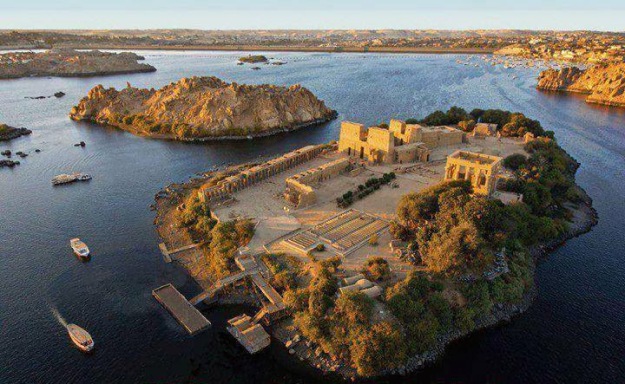
Philae Island – Aswan, Temple of Isis
Download the text in Pdf
The Yet Untold Truth of Ancient Egypt P

